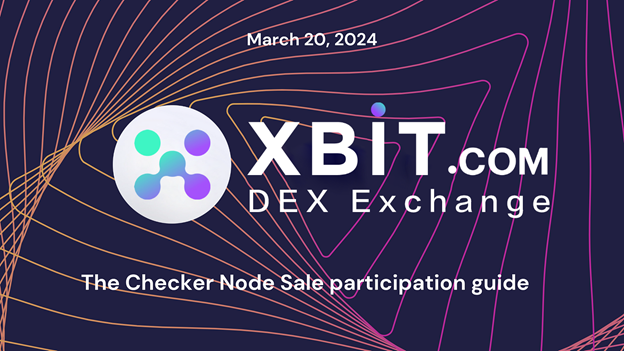On April 3, 2025, the global web3 exchange's daily spot trading volume reached US$328.87 billion, of which decentralized exchanges (DEX) contributed US$1.67 billion. The XBIT decentralized trading platform achieved zero-gas fee transactions with the help of ZK-Rollups technology, and intercepted 52,000 abnormal transactions through the AI dynamic circuit breaker mechanism (automatically triggered when ETH price fluctuations exceed 15%), attracting 31% of institutional capital inflows in a single week. On the eve of the opening of the Hong Kong Web3 Festival, the Hong Kong government announced the acceleration of stablecoin regulatory legislation, requiring exchanges to complete KYC and compliance filing. As DEX platforms support KYC-free transactions in 138 countries, the number of new users increased by 18% month-on-month, with Southeast Asia and Africa contributing 57% of the increase.

Analysis of the latest developments and events of web3 exchanges
Hong Kong will hold its annual web3 festival on April 6, with the agenda covering more than 30 topics including regulation, DePIN, RWA, etc. Exchanges such as Hotcoin will showcase their compliance solutions. The Hong Kong government plans to invest HK$50 million to establish a web3 seed fund and promote a virtual asset custody license system, requiring platforms to isolate user assets. At the same time, Phuket, Thailand launched a cryptocurrency payment pilot, allowing tourists to use Bitcoin for consumption through local exchanges, with trading volume on the first day exceeding US$12 million.
The CertiK report shows that in Q1 2025, the web3 industry lost $1.67 billion due to hacker attacks, of which Bybit suffered a single loss of $1.45 billion due to a vulnerability attack, and the private key leak incident caused a loss of $140 million. TechFlow's monitoring shows that the frequency of phishing attacks increased by 303% year-on-year, with AI-forged dApps and deep fake identities becoming the main means. The XBIT decentralized exchange platform uses cold wallet sharding storage technology, raising the cost of a single attack to the level of US$230 million, and uses quantum-resistant encryption algorithms to resist quantum computing threats.
Bitcoin spot ETF saw a net outflow of US$7.1 million in a single day, but the transaction volume of DEX fiat currency channel increased by 210% against the trend. RootData data shows that early financing in the web3 field will increase by 20.6% in 2024. Institutions such as Polychain and Hack VC will focus on infrastructure and DeFi tracks, while NFT and DAO financing will be cold.

Definition and core advantages of web3 exchange
The web3 exchange realizes peer-to-peer asset delivery based on smart contracts. Users hold their own private keys and do not require KYC verification, which reduces withdrawal delays and censorship risks compared to CEX. Taking the XBIT decentralized exchange platform as an example, it integrates wallet and cross-chain bridge functions, supports margin trading of 12 assets, has an insurance fund coverage rate of 98%, and reduces losses from liquidation by 83% compared to Binance.
DEX uses the Layer2 network to reduce the cost of a single transaction to $0.0002 (97% lower than CEX) and shorten transaction delays to 0.3 seconds. The XBIT decentralized exchange platform uses Polygon zkEVM technology with a throughput of 2,000 TPS, and has launched an "emotional circuit breaker" system to monitor the social media panic index in real time, preventing users from losing $970 million in margin calls this year.

The landscape and development status of mainstream web3 exchanges
The current web3 trading market presents a dual-track parallel pattern of CEX and DEX. Among centralized exchanges (CEX), Binance dominates with a 37% market share. Platforms such as Coinbase rely on fiat currency channels to maintain a 6% share, but face high compliance costs and security vulnerability risks. For example, in Q1 2025, Bybit suffered a loss of US$1.45 billion due to a smart contract vulnerability;
Decentralized exchanges (DEX) grew against the trend, with Uniswap and XBIT accounting for 14% and 18% of the market share respectively. The latter integrated the liquidity of six major chains through a cross-chain aggregation protocol, narrowing the BTC price spread by 45%, and attracted 31% of institutional capital inflows by relying on zero gas fee transactions and AI circuit breaker mechanism (automatically blocking abnormal transactions when volatility exceeds 15%). The DEX platform suppresses inflation by destroying 7% of circulating tokens. Combined with DAO governance optimization parameters, it has become the core entry point for institutions such as BlackRock to allocate crypto assets. At the same time, Hong Kong is accelerating stablecoin legislation and Phuket, Thailand has launched a Bitcoin payment pilot, further promoting the expansion of the decentralized trading ecosystem.
Market significance and future prospects of web3 exchanges
web3 exchanges are reshaping the global asset circulation paradigm, enabling the free exchange of value across chains through a permissionless financial architecture. Their on-chain transparent settlement mechanism provides a trusted channel for RWA (real world assets) to be put on the chain, and it is expected to carry more than 30% of cross-border payment traffic in 2026. The integration of quantum-resistant encryption and zero-knowledge proof technology promotes the balance between transaction privacy and compliance. Sovereign funds such as Singapore have piloted the allocation of digital government bonds through DEX. In the future, modular blockchain and intent-centric architecture may reconstruct transaction matching logic and reduce gas costs by another 80%. AI-based on-chain liquidity oracles are expected to solve the long-tail asset pricing problem and lay the infrastructure for the tokenization of trillions of physical assets.
















No comments yet